Breaking boundaries: Victor Ekpuk’s journey of artistic evolution
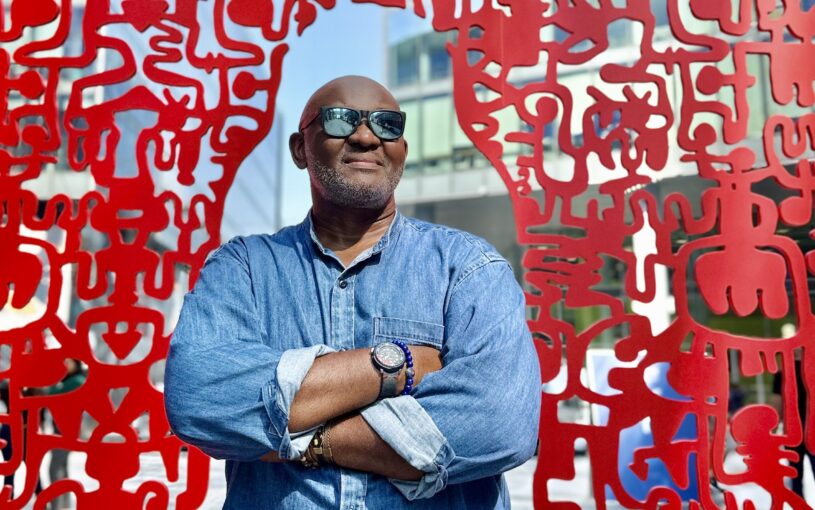
How a visionary artist redefines African art and transforms global perceptions through innovation and cultural heritage
BY KELLIE DIDIGU, ARTS AND CULTURE WRITER
Victor Ekpuk’s journey as an artist began long before he could even spell his name. “I’ve always been an artist, as far as I can remember,” he recalls, his voice carrying the weight of memories filled with childhood sketches and drawings.
Growing up in Nigeria, a society often geared towards traditional career paths in math, science, or law, Victor’s choice to pursue a Bachelor of Art degree from the Obafemi Awolowo University, Ile-Ife, in southwestern Nigeria, was anything but conventional. It was a decision fueled by an innate talent that could not be ignored, nurtured from a young age by his mother, who recognized that her son’s gift was something special.
“I would say that my artistic skills or talent come from my mother’s side of the family. So even before I could write, I was drawing. Before paper was available for me to write, which is why I was just drawing all over the house. When my friends were playing football, [I was] just drawing on the soil with a broomstick. So kneeling and crawling and drawing. My knees used to be quite tough and dark because of all that.”
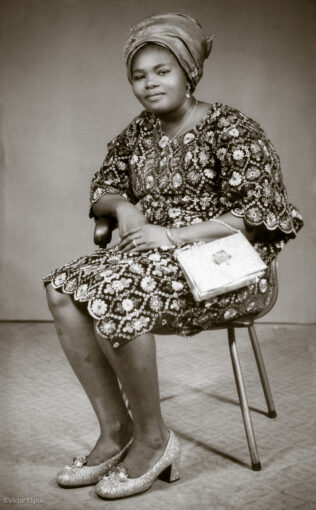
The influence of his surroundings was pervasive, even during his high school years in Lagos. It was a time when the legendary Fela Kuti’s voice against military dictatorship resonated across the nation. Victor often passed by the iconic Afrika Shrine on his way to school, absorbing the rebellious spirit that would later inspire his work as a political cartoonist. “We saw Fela as our folk hero,” Victor reminisces, “and that galvanized us in those areas.”
Victor’s first professional foray into the art world came as a political cartoonist and illustrator for The Daily Times Nigeria in the 1990s. Here, he found a platform to express his views on the tumultuous political landscape of Nigeria.
“It was fun to be able to make fun of the politicians and the dictators,” he says with a chuckle, recalling how his sharp illustrations often skirted the line of censorship while still managing to deliver powerful critiques.
Through these early experiences, Victor Ekpuk not only honed his craft but also began to define his voice as an artist—one that would eventually break boundaries, both cultural and geographic, in the years to come.
Bridging the Past and Present: Nsibidi in Victor Ekpuk’s Art
Victor Ekpuk’s artistic journey is deeply intertwined with his cultural heritage, a connection that is vividly embodied in his use of Nsibidi symbols. Originating over a thousand years ago among the Ibibio, Ejagham, and Efik peoples of southeastern Nigeria and southwestern Cameroon, Nsibidi is more than just a script; it is a visual language rich with meaning and tradition. “The need to use elements of my cultural identity as a means of artistic expression was a driving force behind my work,” Victor explains.
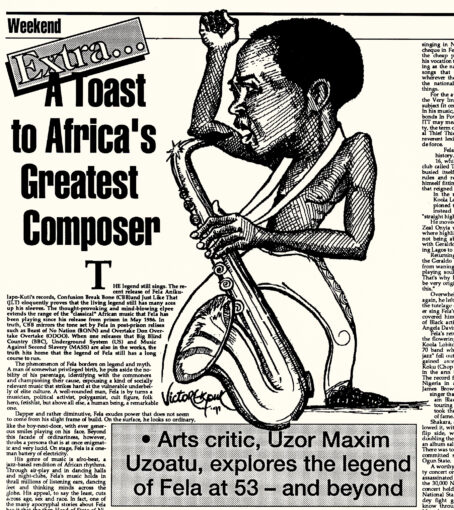
With their stylized geometric shapes and abstract forms, Nsibidi symbols carry layers of meaning—some are representational, while others are ideographic, their interpretation shifting with context. They were once a secret mode of communication within the Ekpe society, also known as the Leopard society, a secret society for men in West Africa that originated among the Efik, Ibibio, and Annang peoples in Nigeria. It is also found in Cameroon and other ethnic groups in Nigeria, as well as in the diaspora in Cuba and Brazil.
For Victor, Nsibidi offers a profound way to connect contemporary audiences with the ancient wisdom and aesthetic traditions of Africa. “I believe that my art serves as a bridge connecting the African continent with its diaspora,” he says. “It explores a shared cultural heritage, historical trauma, and the enduring spirit of resilience. I found that my reinterpretation of Nsibidi connects contemporary audiences with the ancient wisdom and aesthetic traditions of Africa.”
Through his reinterpretation of Nsibidi, Victor not only reclaims a visual language but also challenges Western-centric art narratives, bringing the richness and complexity of African cultural heritage into sharper focus.
Victor’s work resonates deeply with the experiences and identities of Africans living outside the continent. He views his art as a means of bridging the gap between past and present, particularly through themes that engage with the legacy of the transatlantic slave trade. One notable project, “Meditation on Memory,” pays homage to the ancestors of the Ibibio, Ejagham, and Efik peoples who were forcibly displaced to Cuba. This installation, part of the 12th Havana Biennial, was a collaboration with members of the Abakuá society in Cuba, creating a space for shared remembrance and healing. “Meditation on Memory”, directly engaged members of the Abakua society in Cuba. The project aimed to evoke the sacred, aesthetics and metaphysical relationship that still exist among the people of Cuba and Africa.
“My drawings were poems, songs and incantations in honor of these ancestors in the diaspora. It took two weeks to complete the drawing, with recorded Abakua ritual incantations playing in the background all the while, one could say, I was in the spirit.”
Further reflecting on this experience, Victor recalls, “The Havana Biennale was very touching for me. It wasn’t just about the aesthetics of my work, but about how it resonated with the people there. To see the faces of Cubans recognizing what I was doing, to have them identify with the work on a personal level—it was profound. They connected with the history that has been passed down through generations, and for me, as an Ibibio person, to see that connection come to life was incredibly moving.”
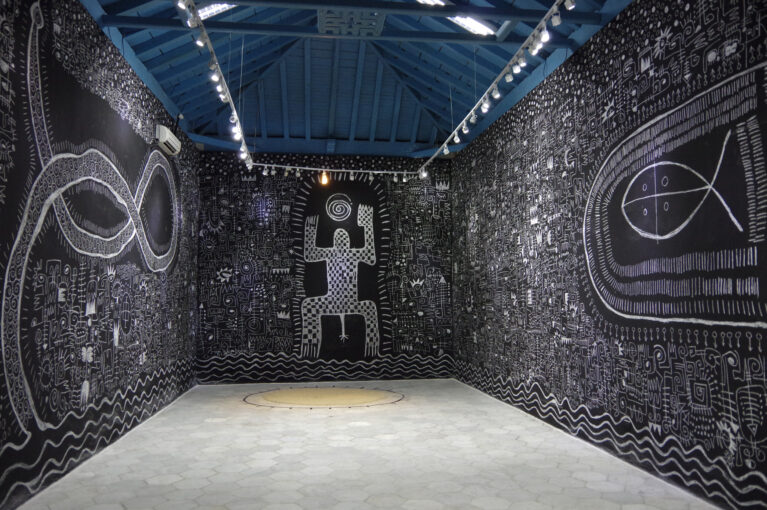
Despite the historical challenges faced by the African diaspora, Victor’s art celebrates the enduring spirit and creativity of African cultures as they adapt, evolve, and thrive in new environments. His work not only honors the past but also serves as a beacon for future generations, ensuring that the stories of Africa and its people continue to be told and remembered.
Challenging the Labels: Redefining African Art
In the art world, labels can be both a gateway and a constraint. For Victor Ekpuk, the categorization of art, particularly the art of the African diaspora, has long been a point of contention.
In the United States, the art of the African diaspora has often been described under the umbrella of ‘Black art,’” he notes, a label that, while meaningful, can also be limiting. For Victor, this oversimplification fails to capture the vast spectrum of artistic expression that Africa has contributed to the world.
“Africa has such a wide range of artistic expression—from naturalism to pure abstraction,” he emphasizes. “The whole idea of Nsibidi itself is abstracting symbols from nature and reducing them to their essence. Most people tend to think that abstraction is something that came out of European thought. No, it came out of an African thought.” Victor’s words challenge the conventional narrative, urging a reevaluation of the origins of abstraction in art.
Victor points to historical examples to illustrate his point. From the realistic bronze heads of Ife, where every expression is meticulously captured, to the stylized human forms in Yoruba art, African art spans a remarkable breadth of styles. “And then you go and look at the Mbuti abstract drawings of Congo,” he continues. “All the really pure, beautiful abstraction that the Kuba artists of Congo made with raffia—that is abstraction.” He highlights how European artists were influenced by African art, often borrowing directly from it without acknowledgment.
The tendency to reduce African art to a single label, Victor argues, does a disservice to its rich and diverse history. “Africa…I think is the mother of whatever you want to call it. So reducing one’s culture or aesthetics to just one form is really very limiting.” Victor’s commitment to reimagining Nsibidi in his work is part of a broader effort to reclaim and redefine African artistic traditions on its own terms.
The Intersection of Art and Technology
Victor Ekpuk’s embrace of technology has been integral to his evolution as an artist. “I’ve always loved technology and the ease that it provides to put my ideas out,” he shares. Whether he’s drawing on his phone, his iPad, or on paper, technology has become a seamless part of his creative process. This integration of digital tools into his practice has allowed him to explore new dimensions in his work, particularly in the realm of sculpture and large-scale installations.
“My evolution to large-scale works was a gradual process,” Victor explains, drawing on the Ibibio proverb, ‘Teeb, teeb, ayogho abang’—drop by drop, the water pot is filled.’ His artistic journey, which began with small-scale drawings, took a significant turn when a serendipitous encounter with digital printing revealed the immersive potential of his work. “When it got blown up and enlarged, I saw the potential for how it could be immersive,” he recalls. This realization sparked a new direction in his career, leading to his first sculpture in 2015 and eventually to large scale public art projects.
Victor’s venture into the fashion industry is another testament to his versatility as an artist. In 2015, entrepreneur Jide Ipaye approached him with an exciting opportunity to collaborate on a new line of shoes for his startup, Keexs. Victor, who had already successfully integrated his artwork into limited edition merchandise through his e-commerce venture, was eager to contribute. Rather than repurpose an existing piece of art, Victor created two new works specifically for the shoes. The collaboration was a success, receiving positive feedback and further demonstrating the adaptability of his artistic vision.
Through these various endeavors, Victor Ekpuk continues to push the boundaries of what African art can be, challenging labels and embracing new mediums to express the depth and breadth of his cultural heritage. His work not only honors the past but also embraces the possibilities of the future, ensuring that African art remains a dynamic and evolving force in the global art scene.
Embracing Time: Victor Ekpuk at 60
This past May, Victor Ekpuk celebrated a significant milestone—his 60th birthday. Reflecting on his journey, he shares, “When I look back, I’ll say I’ve been there, done that. And the wisdom that comes with all the years of having been in the practice and having done what I’ve done, and, you know, sort of having the recognition that I’ve had with my work, it’s something that takes time.” For Victor, reaching this stage in life and art isn’t just about the accolades but about the depth of experience and insight gained along the way.
To commemorate his over 30 years of artistic contributions, Victor’s work was compiled and published in a significant anthology, “Connecting Lines Across Space and Time”, in 2018.
“The book is edited by Professor Tony Falola, who is a well-renowned scholar at the University of Texas at Austin. He himself started as a historian, so he publishes a lot of books. I don’t even know how to describe the man. His scholastic work is too wide,” Victor says with admiration. It was Professor Falola who initiated the project, recognizing the importance of documenting Victor’s legacy in the broader context of African art.
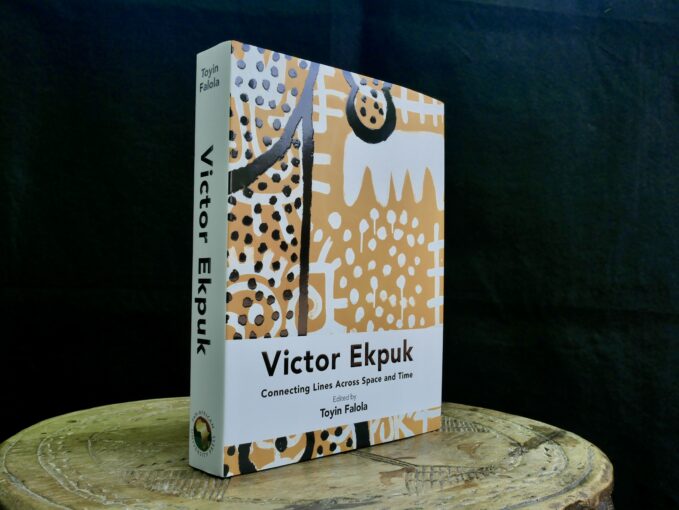
The book is a substantial work, featuring essays from various scholars of African art, each examining different aspects of Victor’s career. “They picked different aspects of my work through the years in my career, and wrote essays for the book, which is about more than 400 pages, a coffee table book,” he explains. Victor fondly refers to it as his “retrospective in a book,” a compilation that not only celebrates his past but also cements his legacy. “For an artist, I think if you strive so much and done as much as one does, being able to be published… It’s a legacy that goes beyond whatever exhibition that I’m doing today.”
At 60, Victor remains deeply engaged and excited about the current art scene. The global shift in the art world, where the focus is expanding beyond Western centers to include voices and expressions from the Global South, particularly excites him. “The excitement of the art scene today lies in its democratization and globalization,” he observes. “The center is shifting from the exclusive Western focus to the Global South, offering the art world a chance to experience cultures and art forms unbound by Western paradigms. I believe we are all enriched by this shift.”
Victor’s work, a testament to this global shift, can be seen in exhibitions and public spaces around the world. His pieces are currently on display at the National Museum of African American History and Culture in Washington, D.C., and the Icon Gallery in New York. In Southeast D.C., a 20-foot steel sculpture stands at Boone Elementary School, bringing his art into the community. His global reach extends to the Kingdom of Bahrain, where his 17-foot sculpture graces the front of The Arab Bank Corporation world corporate headquarters in the Diplomatic Area of Manama, Bahrain, and another sculpture is on display in the Al Safa Art and Design Library in Dubai.
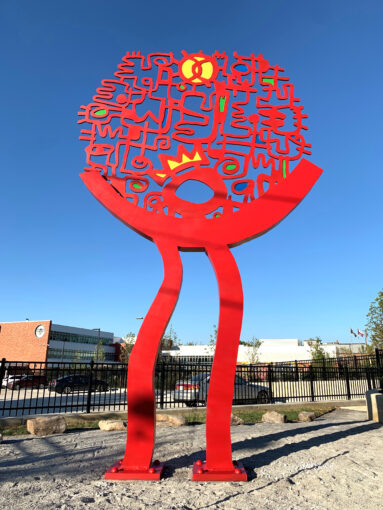
As Victor continues to create, his art evolves, reflecting not only his personal growth but also the dynamic, interconnected world of contemporary art. His journey, far from over, continues to inspire and challenge the boundaries of what art can be, proving that with age comes not just wisdom, but an ever-expanding vision.

